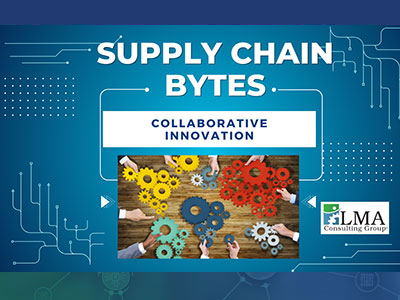How Do Supply Chain Technologies Add Value?

ERP and related technologies should only be a priority if you want to grow and succeed for decades to come. By utilizing ERP and supply chain technologies, you’ll maximize your efficiency and drive customer satisfaction. If not, it will be the same as if you said you wanted to stick with the horse and buggy instead of leaping into a Ford.
To put this into perspective, according to Deloitte Insights (from 20220), manufacturers’ average IT budget as a percentage of revenue is 2.14%. Of course, it depends on whether you are small or large, but the ballpark remains valid. If focused on ERP (as a modern ERP system is vital to success), a rule of thumb is that you’ll spend 5-7% of revenue (for the full project price and implementation cost). How do these compare with your budgets?
How do you benefit from Supply Chain Technologies?
Manufacturing
Manufacturing leaders will gain visibility into work center, staffing, and the master production schedule so that they can optimize production runs and minimize changeovers and costs. They will also gain insights, improve efficiencies, automate steps, improve quality control processes, and reduce inventory and costs.
Engineering
Engineering leaders will gain visibility into workload requirements to support drawings, customer approvals, and bill of material designs. ERP and related systems such as configure-to-order (CTO) quoting systems, PLM, and 3D drawings will speed up progress, save on engineering time, and improve communications.
Purchasing
Purchasing leaders will gain visibility into material requirements plans (MRP) and outside processing requirements so that they can work with suppliers proactively to meet customer requirements while minimizing cost. They will also gain purchase insights, improve efficiencies and streamline workflows.
Logistics
Logistics leaders will gain visibility into storage, warehousing, handling, picking, packing, shipping, transportation, returns, and equipment requirements so that they can plan accordingly. With WMS, TMS, inventory optimization, ASRS, AR, VR, and digital twins, they will gain efficiencies, improve quality & increase safety.
Finance
Finance leaders will gain visibility into sales forecasts, staffing plans, and inventory projections. Thus, they will have revenue, cost, profitability, and cash flow projections, and they will gain insights into customer and product profitability, improved processing efficiencies and business analysis and scorecard capabilities.
Sales & Marketing
Sales and Marketing leaders will gain visibility into their sales forecasts, quotes, and order backlog. They will also gain high levels of service for their customers with on-time-in-full (OTIF) levels, shorter lead-times, and high ratings on customer scorecards. They also will gain greater responsiveness and customer value.
Planning
Planning leaders will gain visibility into the demand plan, sales orders, quotes, replenishment orders, and work order status so that they can develop the best master production schedule (MPS) to optimize customer service, operational efficiency and working capital. They will gain high service levels and increased margins.





